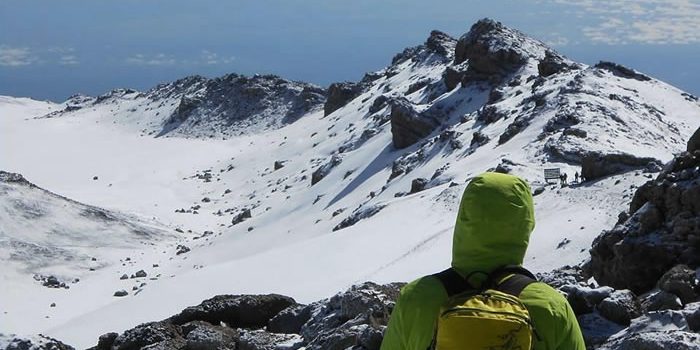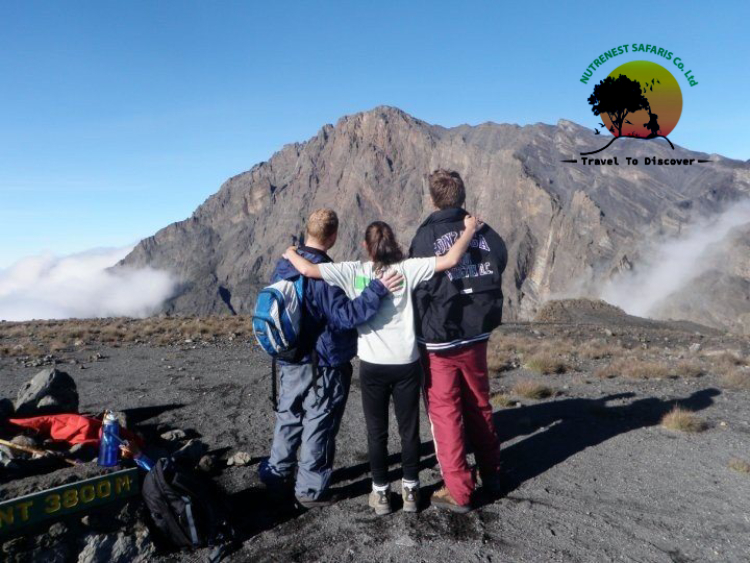Why is Mountain Kilimanjaro So Famous?
Mount Kilimanjaro, the majestic “Roof of Africa,” stands tall at 5,895 meters (19,341 feet), dominating the Tanzanian skyline. As the tallest freestanding mountain in the world and Africa’s highest peak, it attracts thousands of climbers every year, ranging from seasoned mountaineers to first-time adventurers. Its allure goes beyond its height; Kilimanjaro’s unique blend of landscapes—from lush rainforests to alpine deserts and glaciers—makes it a once-in-a-lifetime experience for many.
This article will guide you through everything you need to know about climbing Kilimanjaro: preparation, routes, health considerations, logistics, and the unforgettable experiences awaiting you on the mountain.
 What Do I Need to Prepare Before Climbing Kilimanjaro?
What Do I Need to Prepare Before Climbing Kilimanjaro?
Physical and Health Requirements
Climbing Kilimanjaro is not technical, meaning no specialized climbing equipment is required, but it is physically demanding. Proper training should begin several months in advance, focusing on aerobic exercises (like running, swimming, or cycling) and strength training (for your legs, core, and upper body). It’s also vital to include long hikes in your routine to simulate extended exertion at high altitudes.
Health clearance is essential, especially if you have any pre-existing conditions. Consult your doctor and ensure you’re fit for high-altitude trekking.
What Gear Do I Need for Kilimanjaro?
Packing the right gear can make or break your Kilimanjaro experience. Here’s a checklist of essentials:
Clothing: Layered clothing for different weather conditions, including moisture-wicking base layers, insulated jackets, and waterproof outerwear.
Footwear: Well-worn, sturdy hiking boots with ankle support.
Backpack: A daypack for essentials (water, snacks, camera) and a larger pack carried by porters.
Other Essentials: Sunglasses, trekking poles, gloves, headlamps, and a good sleeping bag designed for sub-zero temperatures.
What Are the Visa and Travel Requirements?
For most nationalities, a visa is required to enter Tanzania. You can obtain a visa upon arrival at major entry points like Kilimanjaro International Airport (JRO) or apply online in advance. Don’t forget to bring your vaccination certificates, especially proof of yellow fever vaccination if traveling from a country where the disease is endemic.
Which Route Should I Choose to Climb Kilimanjaro?
There are six main routes to summit Kilimanjaro, each offering a unique experience in terms of scenery, difficulty, and duration. Here’s an overview to help you decide:
Marangu Route: The “Coca-Cola” Route
• Distance: 72 kilometers (45 miles)
• Duration: 5-6 days
• Difficulty: Moderate
• Pros: Offers hut accommodation instead of camping
• Cons: Less scenic, with a lower summit success rate due to fast ascent.
Machame Route: The “Whiskey” Route
• Distance: 62 kilometers (39 miles)
• Duration: 6-7 days
• Difficulty: Challenging
• Pros: Stunning scenic diversity, higher summit success rate.
• Cons: Steeper and more physically demanding.
Lemosho Route: The Scenic Beauty
• Distance: 70 kilometers (43 miles)
• Duration: 7-8 days
• Difficulty: Moderate to challenging
• Pros: Panoramic views and lower crowd levels.
• Cons: Longer duration, which can increase costs.
Rongai Route: The Northern Adventure
• Distance: 74 kilometers (46 miles)
• Duration: 6-7 days
• Difficulty: Moderate
• Pros: Quieter and offers a unique perspective of the mountain.
• Cons: Less scenic until reaching higher altitudes.
How Do I Manage Health and Safety on Kilimanjaro?
What Is Altitude Sickness and How Can I Prevent It?
Altitude sickness, caused by the body’s inability to adjust to the decreased oxygen levels at high altitudes, is a major concern when climbing Kilimanjaro. Symptoms include headaches, dizziness, nausea, and fatigue.
Preventing altitude sickness involves:
• Acclimatizing properly by ascending slowly.
• Following the “climb high, sleep low” principle.
• Staying hydrated and consuming a high-calorie diet.
• Consulting with your guide regarding altitude medication like Diamox.
Are There Emergency Response Plans on the Mountain?
All reputable tour operators have safety protocols, including emergency oxygen and portable stretchers. Communication with the nearest hospital or evacuation service is available at certain points on the mountain. It’s crucial to have travel insurance that covers high-altitude trekking.
What Vaccinations Are Needed?
In addition to the yellow fever vaccine (if applicable), you may need routine vaccines like hepatitis A and B, typhoid, and tetanus. Be sure to consult a travel clinic well in advance of your trip.
What Is the Role of Guides and Porters?
Hiring a licensed guide is mandatory, and they’ll be your primary source of support throughout the climb. Porters are also crucial, as they’ll carry your heavier gear and set up camp. Kilimanjaro trekking fees often cover guides, porters, permits, meals, and park fees.
What Are the Accommodation Options?
Accommodation varies depending on the route. While the Marangu route offers basic huts, other routes like Machame and Lemosho involve camping. Tour operators provide tents, cooking services, and sometimes even dining tents for added comfort.
How Much Does Climbing Kilimanjaro Cost?
The cost ranges from $1,500 to $4,000, depending on factors like route, operator, and duration. Be wary of cheap tours, as they may cut corners on safety or porter treatment. Kilimanjaro National Park fees alone range from $800 to $1,000, which contributes significantly to the overall cost.
What Are the Best Tips for a Successful Kilimanjaro Climb?
Acclimatization Techniques
Take the longest possible route to maximize acclimatization. The more time you spend on the mountain, the better your body adjusts to the altitude.
How Can I Manage My Pace?
“Pole, pole” (slowly, slowly) is a mantra you’ll hear often on Kilimanjaro. Maintaining a steady, slow pace is essential to conserve energy and avoid exhaustion.
How Important Are Hydration and Nutrition?
Staying hydrated is vital. Aim to drink at least 3-4 liters of water per day. Your tour team will provide balanced meals, but it’s a good idea to pack high-energy snacks like nuts, energy bars, and dried fruit.
Final Tips and Recommendations
Train consistently and start preparing early, choose a route that matches your fitness level and experience, respect the mountain, the local culture, and the environment, stay positive, and remember that the journey is as important as the destination.
What Wildlife and Ecology Will I Encounter on Kilimanjaro?
Kilimanjaro boasts a variety of ecosystems, from lush rainforests to barren alpine deserts. Along the lower slopes, you’ll encounter colobus monkeys, birds like the scarlet-tufted malachite sunbird, and a range of plant species. Higher up, the landscape turns into moors, home to unique plants like the giant groundsel. Conservation efforts are critical, as Kilimanjaro’s glaciers are rapidly retreating due to climate change.
What Responsible Climbing Practices Should I Follow?
Stick to designated trails to minimize your impact. Carry out all waste, and avoid using disposable plastic bottles. Support tour operators who adhere to ethical Porter treatment standards.
Is Climbing Kilimanjaro Worth It?
Absolutely! Scaling Mount Kilimanjaro is more than a physical challenge; it’s a journey of self-discovery. The sense of accomplishment as you stand on Uhuru Peak, watching the sunrise over the African plains, is incomparable. The mountain tests your limits but rewards you with memories that last a lifetime.
So, are you ready to conquer Africa’s highest peak? As the Swahili saying goes, “Twende!” (Let’s go!)

 What Do I Need to Prepare Before Climbing Kilimanjaro?
What Do I Need to Prepare Before Climbing Kilimanjaro?




